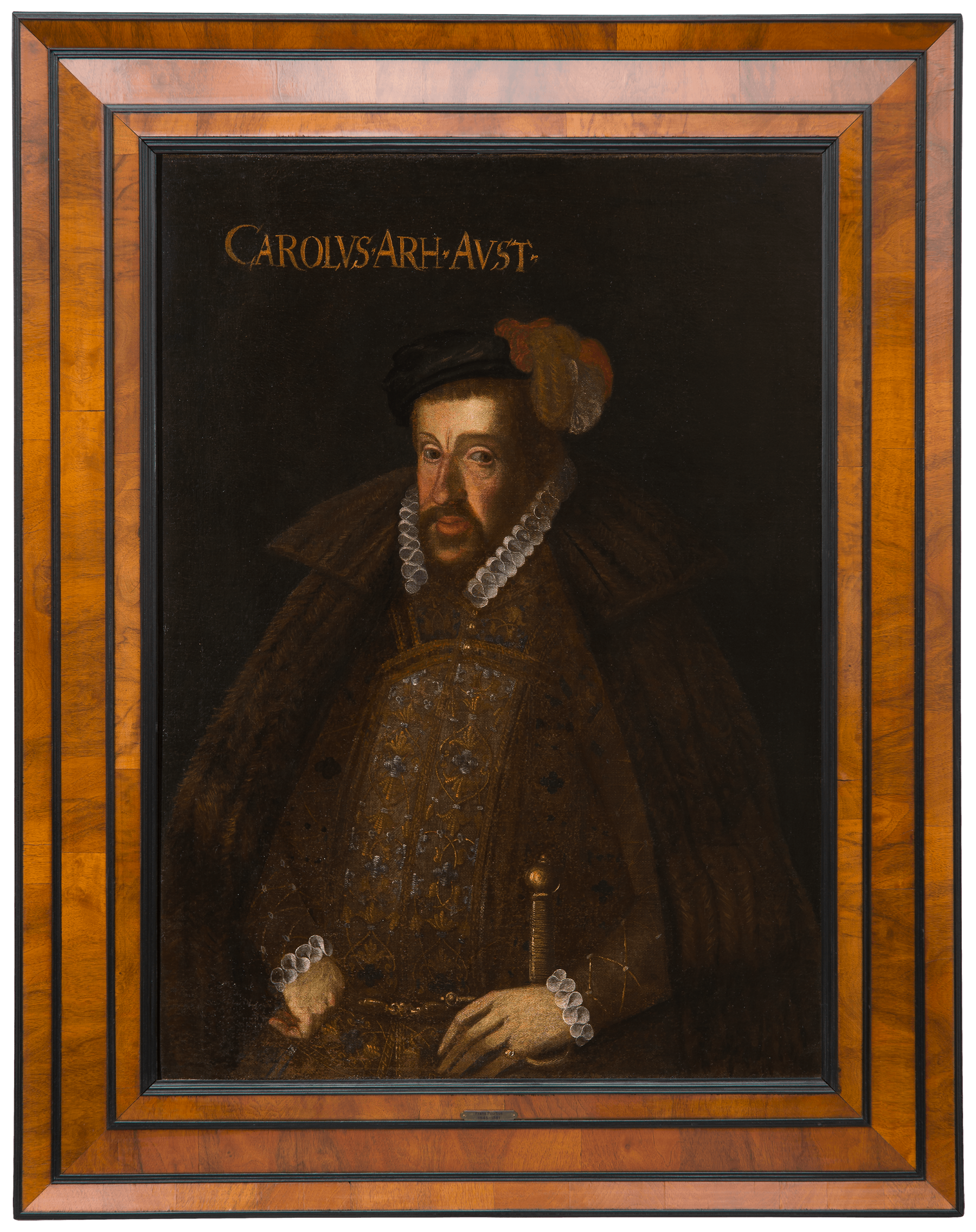

Archduke Charles II Anonymous, 17th c.
Between “Turks” and Protestants
Charles, who was destined for greatness by his father, Emperor Ferdinand I—e.g. he was negotiated as a potential husband for Elizabeth I of England and her rival Mary Stuart—finally had to content himself with a Bavarian princess and the regency of Inner Austria. On this periphery, his political daily routine was marked by religious controversy, wars against the Ottoman Empire, and permanent financial straits. Due to this, he had to enter dependencies, prohibitions followed concessions, repression followed tolerance.
Oil on canvas
135 × 105 cm
Graz Museum / Photo: Arno Friebes
Archduke Charles II of Inner Austria (1540–1590)
Charles was the third son and twelfth of a total of fifteen children of Emperor Ferdinand I. In contrast to his eldest brother Maximilian II, he was regarded as a faithful follower of Catholicism, a circumstance which, among other things, influenced his father’s decision to once again divide the Hapsburg hereditary lands in 1564. Charles became Archduke of Inner Austria, elevated Graz to the status of a royal seat, promoted its urban development and established a well-functioning central administration. In the course of the violent recatholization of Inner Austria, Charles brought the Jesuits to Graz and entrusted them with running the newly founded Latin School and University. In 1590, the sovereign died at the age of 50 and was buried in the tomb of the mausoleum in Seckau.
